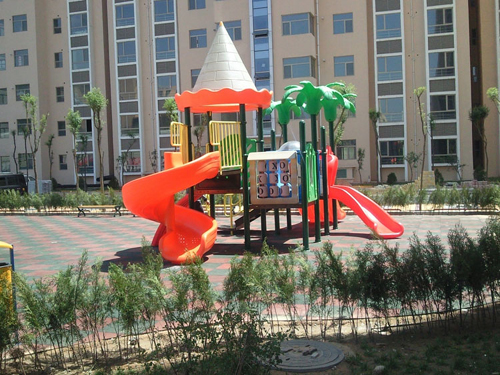Product Categories
- New outdoor Playground (29)
- Small Size Playground (40)
- California City (8)
- Nature Series (18)
- Space City (10)
- Rocket Series (9)
- Fantasyland Series (16)
- Animal Series (10)
- Tree House (15)
- Ice World (4)
- Pirate Ship (5)
- Tropical Series (4)
- Water Park (5)
- Fancy Series (24)
- Ocean Theme (18)
- Swings And Slides (22)
- Full Plastic (14)
- Fun Fitness (9)
- Spring Rider (59)
- Climbing Wall (21)
- Small Swing (20)
- Wooden Bench And Bin (24)
- Safety Mat On Floor (0)
News
- Looking for cheap home playground equipment?
- How to transform your backyard into a fun play area?
- Quotes of Cheap Playground Equipment in April.2017
- How Playground Culture Can Help A Child With Autism?
- Can outdoor play structure help kids gain self-confidence?
- Playground Equipment Is Simple & Effective For Children
- Enquiries of Cheap Playground Equipment in March.2017
- Playground Equipment: Let Your Child Create Sweet Memories
- Can I get cheap playground equipment for my community?
- Plastic Playground Equipments Keep Your Children Safe
Article
Pagoda: Its History and Function Commercial playground
A pagoda is a structure common in Japan, Korea, China, as well as many other parts of Asia. The name "pagoda" has been traced back to the early 17th century. It is generally associated with 'temple'; as pagodas are usually used as places of worship, especially in Asia.
Its History in the East:
Pagodas originally come from India, and were quickly adopted by the Buddhists who use them as a place to preserve the bodies of the dead. This makes perfect sense as in the classical Indian language of Sanskrit, pagoda means tomb. The structure later came to be used for temples as well as tombs.
Its Function in the West:
In western countries the pagoda has become a familiar shape, though it is not always associated with religion. While there is an increasing number of Buddhists living in the West, it is not a predominant religion. There have however been efforts to incorporate the teachings of Buddhism and its culture into Western thought. Sometimes this manifests itself in public structures dedicated to Buddhism. Usually these structures are in the form of a pagoda, as the shape is the one of the most familiar Asian building shapes for those in the West.
The pagoda structure spread from India to China with the expansion of the Buddhist religion throughout the continent of Asia in the first century AD. Buddhism took root in China partly because of the strong symbolism associated with the religion, especially with regards to its buildings and its statues. In China the pagoda became less of a tomb structure and more of a temple structure, a place of worship. From China the structure spread to countries such as Japan and Korea, helped by the further proliferation of the Buddhist religion. Today Buddhism is the prevalent religion in many Asian countries, and it is the fourth largest religion globally. The pagoda structure is similarly common throughout Asia.The pagoda has also been altered for a variety of uses outside the evocation of Buddhism. The shape is often seen in use as a shelter in parks and gardens. It is sometimes used as a general tent shape for outdoor events such as weddings. It might even be put in as a permanent shelter for playgrounds and schoolyards. Basically the pagoda shape has been adopted and changed to fit a variety of functions. It is a common structure in the West, though it is often pretty dissimilar to its cousins in the East.Commercial playground




